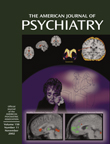Modafinil for Social Phobia and Amphetamine Dependence
Ms. A was a 45-year-old Caucasian woman who came to our outpatient clinic for treatment of social phobia and comorbid amphetamine dependence. Her symptoms started during her early 20s. She described episodes of overwhelming anxiety, especially when she needed to present projects to her teachers. She had a partial response to fluoxetine. A friend introduced her to amphetamines; she started using them on a regular basis at age 27. She reported some relief of her anxiety, but 1 year later she met criteria for amphetamine dependence. She dropped out of school, became homeless, and was incarcerated several times for drug possession.Her health care providers recommended that she enroll in drug rehabilitation before any further pharmacological treatment could be pursued. At one point, Ms. A was given a trial of methylphenidate and dextroamphetamine. She misused these prescription drugs. She had difficulties working with health care providers because of her explosiveness, overwhelming anxiety, agitation, and depression. She refused to take any medication that caused her to gain weight. She achieved no benefit from trials of lithium, anticonvulsants, venlafaxine, bupropion, selective serotonin reuptake inhibitors, and atypical antipsychotics. We started modafinil treatment, up to 200 mg b.i.d. At this point, she was also taking fluoxetine, 40 mg/day. She reported that her craving for amphetamines diminished, and her anxiety and depression improved. She did not spend most of her time looking for the amphetamines in the street and was able to apply for a regular job. She did not report the same “high” with modafinil that she experienced with amphetamines. Ms. A now works part-time and recently returned to school.
References
Information & Authors
Information
Published In
History
Authors
Metrics & Citations
Metrics
Citations
Export Citations
If you have the appropriate software installed, you can download article citation data to the citation manager of your choice. Simply select your manager software from the list below and click Download.
For more information or tips please see 'Downloading to a citation manager' in the Help menu.
View Options
View options
PDF/EPUB
View PDF/EPUBLogin options
Already a subscriber? Access your subscription through your login credentials or your institution for full access to this article.
Personal login Institutional Login Open Athens loginNot a subscriber?
PsychiatryOnline subscription options offer access to the DSM-5-TR® library, books, journals, CME, and patient resources. This all-in-one virtual library provides psychiatrists and mental health professionals with key resources for diagnosis, treatment, research, and professional development.
Need more help? PsychiatryOnline Customer Service may be reached by emailing [email protected] or by calling 800-368-5777 (in the U.S.) or 703-907-7322 (outside the U.S.).

